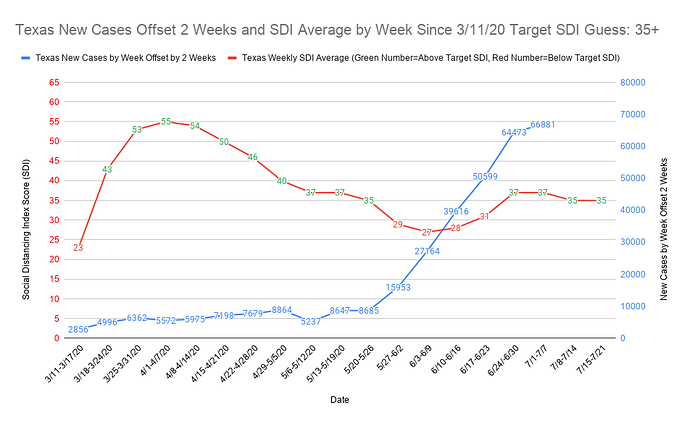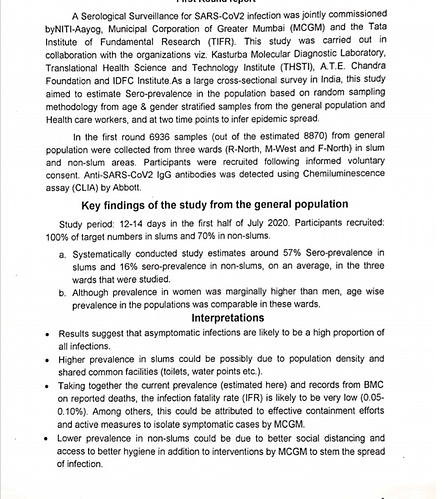I genuinely thought this was the one part of the internet where people would get past a two word phrase and actually read the entire post.
I guess we were both wrong.
https://www.miamiherald.com/news/coronavirus/article244537942.html
Florida’s Department of Health on Tuesday morning confirmed 9,230 additional cases of COVID-19, bringing the state’s known total to 441,977. There were also 186 new Florida resident deaths announced, increasing the statewide resident death toll to 6,117.
The 186 deaths mark the highest single-day death toll announced by the Florida Department of Health since the pandemic began, but it does not necessarily mean that every person died in the past 24 hours.
In Florida, the deaths announced on a given day could be from several days earlier because the state information does not include the exact date of death. Previously, the highest single-day toll was reported on Thursday, with 173 deaths.
Florida’s COVID-19 Data and Surveillance Dashboard later updated Tuesday to show that five new non-resident deaths were announced, bringing the non-resident death toll to 123.
Speaking of HCQ, this Yale professor wrote an op-ed about how dumb we are for not prescribing it to early cases.
The idea pushed here is idiotic. There are very few treatments that work better when given to people who are less sick. This is especially true in a disease like covid where huge numbers of people don’t develop any significant symptoms. The drug just has to have no downside at all for the math to support a benefit.
It’s also supported by zero well done studies. If you do a meta analysis of shit studies you still end up with a shit study
But he teaches at Yale!
Here’s your downer moment for the day. South Korea has done so well in this pandemic because they did so poorly in their previous two epidemics. This is the U.S.'s first and I don’t have a lot of confidence we’ll get number 2 or 3 right based on how people have acted…
Here’s what I think you’re looking for in column form for Texas (I graphed it in row form, but want it to look neater for this site). I also included the graph that was produced. For the exercise, I think you first feel effects at 2 weeks, so I set it as SDI is static by week, but then used the new case numbers for 2 weeks later (it would leave new cases for the last two measurement periods open). Is this what you meant?
The reason I chose Texas was because it had good SDI, volatile SDI, and is back at a good SDI. That may make it a good test case. Arizona was too flat from what I could tell. Another decent test might be Connecticut.
Data Set and Graph
| Date (Date of SDI, Target 35+) | Texas Weekly SDI Average | Texas New Cases by Week Offset by 2 Weeks |
|---|---|---|
| 3/11-3/17/20 | 23 | 2,856 |
| 3/18-3/24/20 | 43 | 4,996 |
| 3/25-3/31/20 | 53 | 6,362 |
| 4/1-4/7/20 | 55 | 5,572 |
| 4/8-4/14/20 | 54 | 5,975 |
| 4/15-4/21/20 | 50 | 7,198 |
| 4/22-4/28/20 | 46 | 7,679 |
| 4/29-5/5/20 | 40 | 8,864 |
| 5/6-5/12/20 | 37 | 5,237 |
| 5/13-5/19/20 | 37 | 8,647 |
| 5/20-5/26 | 35 | 8,685 |
| 5/27-6/2 | 29 | 15,953 |
| 6/3-6/9 | 27 | 27,164 |
| 6/10-6/16 | 28 | 39,616 |
| 6/17-6/23 | 31 | 50,599 |
| 6/24/-6/30 | 37 | 64,473 |
| 7/1-7/7 | 37 | 66,881 |
| 7/8-7/14 | 35 | |
| 7/15-7/21 | 35 |
Update on the UMD situation is it looks like they yanked the new data down, so I think something was input incorrectly.
A new serological study was just released out of Mumbai. IFR estimates were .05% - .1%. Many of the participants were in slums and they found 57% seroprevalence there as opposed to 16% in non-slums.
Interestingly enough, mortality rate in poorer areas and poorer countries looks to be lower despite worse care. Being younger seems to be the driving influence.
No.
Why no? This is taken directly from the shared study. Do you disagree with their methodology? Are you worried about misapplying studies from other countries?
It’s an order of magnitude less than anyone else.
Buckle up. You’re in for a fun ride.
The real headline of this imo is them finding that a huge proportion were asymptomatic. No other antibody study has found more than around 50% asymptomatic. It would be nice if they gave the actual number.
If they somehow found 80-90% of cases were asymptomatic then that would very likely also drive the IFR way down. But it would also make you really question the study methodology and antibody test used, since no one else is finding results like that.
Agreed, it would be nice to find details of asymptomatics in the study. I was only able to find the press release. If anyone else can find more details on the study please share.
What stuck out to me is that it seemed to support a trend that poorer countries have better mortality, which is pretty counterintuitive. By one count, “developing countries represent 85 percent of the global population, but only 21 percent of the pandemic’s death toll”. Sure the statistics aren’t as reliable in these countries, but the death count shouldn’t be that terrible. The mortality rate in India, China, Vietnam, Cambodia, etc. is really pretty low.
29 teams / 6400 tests of on field personal. All negative since Friday per MLB network… who needed the fukkin puke Marlins anyway. Baseball is back baby:unicorn:

Glad you said it.
I could definitely see that hot and humid with no AC decreases viral load - because the virus has a shorter half life and people’s mucus membranes aren’t as dry - which could decrease infection severity.
The Philippines is getting hammered.
I think we should be careful drawing conclusions on correlations between poorer countries. The confounding variable is that they all have significantly underfunded health care systems.
Where excess death data exists in poorer countries it suggests that it’s bad.
Philippines has 2000 deaths out of 106M in population.
Do you see excess deaths somewhere?

